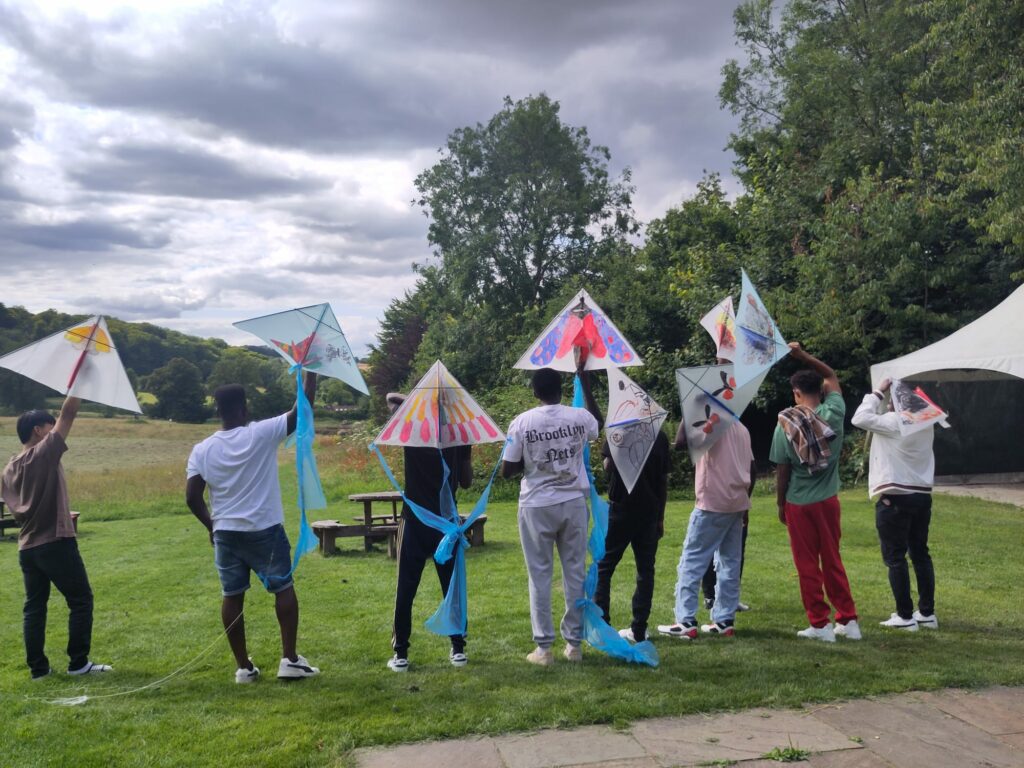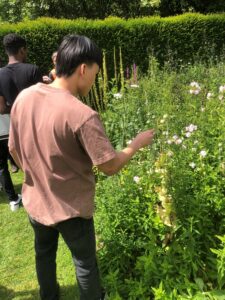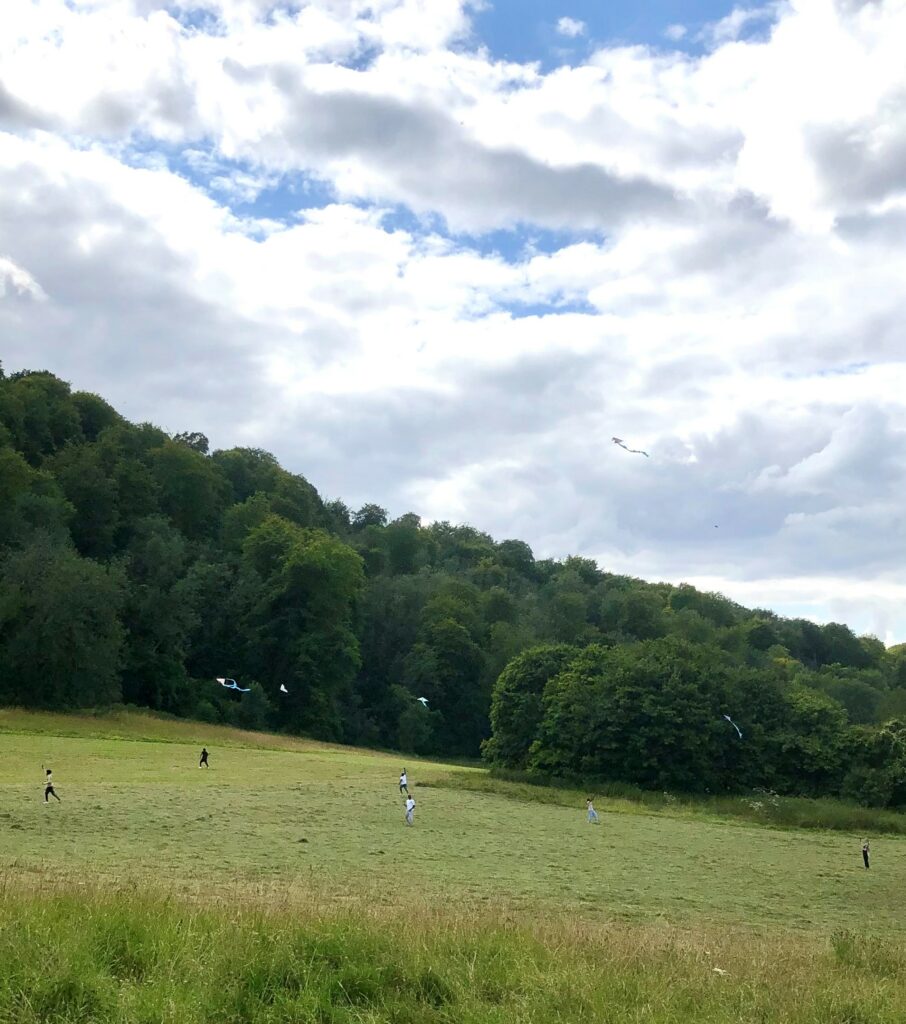Migrant Journeys is a project funded by the Royal Society’s Places of Science grant about the movement of insects, birds and people across the globe.

Working with the charity The Rural Refugee Network we invited a group of young men to our site who had come to Britain as migrants. They were aged between 16 and 19 and had come from Sudan, Eritrea and Vietnam and are now resident in Portsmouth. The day started by all of us marking on the map the places we had come from. We then examined moths trapped the previous evening at a Moth Night on site and discussed how the tiny Silver Y moth flies all the way from Africa to breed in the UK. We walked in the Meadow to look at the butterflies and learn about butterfly migration and we went into the museum and saw the range of creatures on display from around the world, some of which were familiar to the young men. In the gardens they enjoyed examining and sniffing plants and herbs, recognising vegetables growing and sharing memories of plants from home. The day included an art workshop in which the young men decorated kites to remind them of the fragile insects who make the long journey to our shores each year and to help them feel a connection to these little creatures through the shared experience of journeys. They enjoyed flying their kites in the Meadow. The day was designed to increase the young people’s connection to nature for the benefit of their wellbeing and to give them first hand experience of the English countryside.

The project also seeks to increase awareness of insect migration. 2024 marks 250 years since Gilbert White presented a paper on bird migration to the Royal Society. In Gilbert’s day people thought it unlikely that small birds could fly hundreds of miles. Whilst bird migration is now widely known about, many people are unaware that some insects migrate. Some species of moths and butterflies may travel hundreds or thousands of miles to and from the UK . There is still a lot we don’t know about insect migration and it is changing as the climate changes. We are continuing Gilbert’s model of ‘citizen science’ by recording the species of moths and butterflies found on our site and noting changes over the years. Our popular Moth Nights are just one way in which visitors can learn more about this.
To find out more we will soon have a small display in our Legacy Room in the museum about the day!
 Photo Credit: Gilbert White’s House & Gardens & Emily Mott
Photo Credit: Gilbert White’s House & Gardens & Emily Mott
